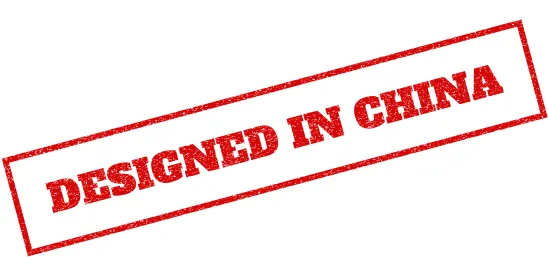On October 28, 2024, the Beijing Intellectual Property (IP) Court released the “Analysis of Patent Granting and Confirmation Cases 2014-2024” (专利授权确权审判案析(2014-2024)) providing summaries of 58 typical cases of administrative patentability and invalidation. The Beijing IP Court has sole jurisdiction over administrative litigation against the China National Intellectual Property Administration (CNIPA) and has heard over 10,000 administrative patent cases over the past decade. The Analysis includes “20 guiding principles for case analysis… in a bid to enhance the predictability of judicial decisions.”
For ease of reference, the Guiding Principles are reproduced below. The Beijing IP Court appears to be geoblocked but the original text can be viewed via Chinese social media here (Chinese and English).
I. Determination of the Scope of Protection of Claims
In a patent granting and confirmation case, the scope of protection is defined by the content of the claims. However, not every element contained in a claim necessarily has a limiting effect. If the relevant content does not affect the product or method itself, it will not have a limiting effect, though included in the claims. Typically, such content is not considered when the scope of protection of claims is determined.
II. Unrecited Technical Features and the Scope of Protection of Claims
Except for closed-ended claims in the field of chemistry, if a technical feature is not recited in a claim, it shall be understood as the feature being not defined, rather than not included, in the claim, provided that there is no implicit limitation.
III. Description and the Scope of Protection of Claims
Although a description can be used to interpret the claims, it does not have a limiting effect on them. In a patent granting and confirmation case, the specific embodiments specified in the description generally should not be used for restrictive interpretation of the claims.
IV. Content Disclosed on Social Media and Determination of the Prior Design or Art
Prior art or design refers to any technical solution or design that was publicly available, both domestically and internationally, before the filing date of a patent application. For content disclosed on social media, such as WeChat Moments, if there is no evidence proving that the audience was bound by a confidentiality obligation, such content should be considered to be publicly known.
V. Proof of Disclosure by Use
The determination of disclosure by use generally requires mutual corroboration by a series of exhibits, such as contracts, invoices, physical products, or photos. If the aforementioned chain of exhibits does not meet a clear and convincing standard of proof, disclosure by use usually cannot be determined. However, this does not mean that the invalidation petitioner should be subjected to an excessive burden of proof.
VI. Determination of Presumed Disclosure
For technical features such as the performance, parameters, uses, preparation methods, installation methods, or application environments outlined in product claims, if the patentee or the patent applicant cannot demonstrate that these features are sufficient to distinguish the product from the prior art, it can be presumed that these features have been disclosed by the prior art, even if they are not explicitly documented in the prior art.
VII. Determination of the Novelty of Compounds
In judging the novelty of a compound, it can be presumed that the compound does not possess novelty if the compound has been mentioned in a reference document, unless there is evidence proving that the compound could not be obtained before the filing date of an application.
VIII. Role of the Closest Prior Art
The role of the closest prior art in the three-step approach is equivalent to the starting point of a real R&D process. If, with the prior art as the basis for judgment, a person skilled in the art will have motivation for research and development and obtain the technical solution in suit without creative labor, the technical solution in suit may be considered to be non-inventive.
IX. Determination of Correspondence Between Technical Features
When comparing the claim in suit with the closest prior art to determine the distinguishing features, if the corresponding parts or components of the two technical solutions perform essentially the same function respectively, they generally correspond to each other. This correspondence includes both one-to-one and one-to-many or many-to-one situations.
X. Technical Problems and Scope of Protection of Claims
The technical effect corresponding to the technical problem actually solved shall apply to all technical solutions within the scope of protection of the claim. Technical effects that apply only to part of the technical solution shall not be considered as technical problems actually solved.
XI. Relationship Between Technical Problems and Technical Effects
The technical problem actually solved corresponds to the technical effect that the distinguishing feature can achieve in the invention or the application in suit. The technical problem shall not only be specific to the distinguishing technical feature, i.e., not too general, but also generally shall not include the distinguishing technical feature.
XII. Acceptance and Admissibility of Supplementary Experimental
Data
If the technical effect to be proved by the supplementary experimental data is recorded in the patent document or is known to a person skilled in the art based on the contents disclosed in the specification, the supplementary
experimental data may be accepted. If the supplementary experimental data can prove that the relevant technical effect is applicable to all technical solutions within the scope of protection of the claim and that it is a technical contribution made by the patentee or the patent applicant before the filing date of an application, the relevant supplementary experimental data is generally admissible.
XIII. Non-obviousness and Technical Concepts
Technical features are concretization of a technical concept. If the technical concept embodied by the distinguishing technical features has been disclosed or is easily conceived, and the distinguishing technical features are conventional means or conventional choices for realizing this technical concept, then the acquisition of these distinguishing technical features can be deemed obvious. However, if the technical concept is not easily conceived, then the acquisition of the distinguishing technical features is non-obvious.
XIV. Combined Prior Art and Technical Inspirations
In the inventive step assessment, the role of the closest prior art lies in identifying technical problems and generating research and development motivation, while the role of the combined prior art is to solve these technical problems. If a person skilled in the art is motivated to make improvements based on the closest prior art and one or several technical features from the combined prior art can be used to solve the technical problem, it can be determined that the prior art provides technical inspiration. This determination is not affected by whether the prior art and the patent in suit belong to the same technical field.
XV. Combination Barrier, Technological Bias, and Inventive Step
Assessment
If the patentee or patent applicant claims a combination barrier or technical bias among the relevant technical features with no documentation in the specification and in the absence of sufficient evidence, the arguments thereof for the inventive step of the patent in suit or application are untenable.
XVI. Overall Technical Concept and Inventive Step Assessment
If the patent or application in suit has different overall technical concepts compared with the closest prior art, and the acquisition of the overall technical concepts is non-obvious, it can generally be determined that the patent or application in suit possesses an inventive step. If the acquisition of the technical concepts does not require creative efforts, but the technical means to realize the concept are non-obvious, the patent or application shall be recognized as possessing an inventive step.
XVII. Impact of the Combination of Reference Documents on
Inventive Step Conclusion
In inventive step assessment, as the closest prior art plays a different role from the combined prior art, a different reference document selected as the closest prior art from the same combination of reference documents may lead to a different conclusion on inventive step assessment.
XVIII. Inventive Step Assessment of Utility Model Patent
In the inventive step assessment of a utility model patent, even if the technical field of the combined prior art is not identical, similar or related to that of the utility model patent, it cannot be directly concluded that the utility model patent is inventive, and it is still necessary to further judge whether a person skilled in the art of the utility model patent needs to make creative efforts to obtain the utility model patent based on the prior art.
XIX. Amendment to Claims in Invalidation Proceedings
In patent invalidation proceedings, amendment manners such as introducing any technical feature specified in the description into the claims do not meet the reasonable expectations of the public based on the four amendment manners listed in the Guidelines for Patent Examination, and are thus unacceptable.
XX. The Description’s Support for Markush Claim
If a person skilled in the art believes that a compound defined by a Markush claim can solve the technical problem solved by the patent in suit, and there is no contrary evidence proving that some of the compounds within the scope of protection of the Markush claim fail to achieve the specified technical effect or fail to be prepared, it shall be deemed that the claim is supported by the description.



 />i
/>i

